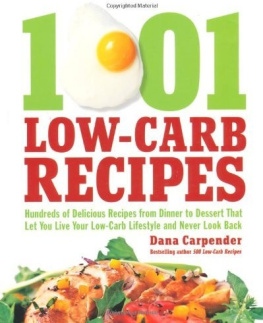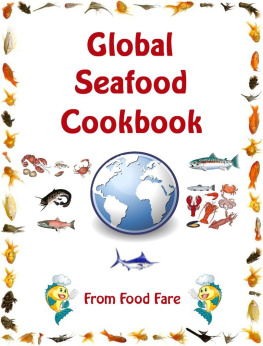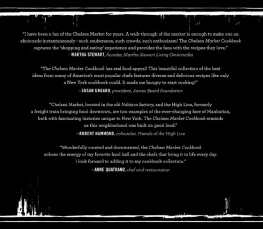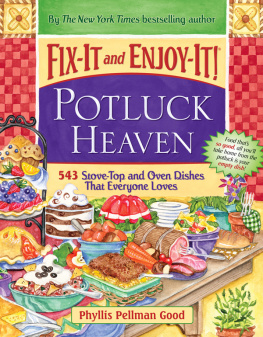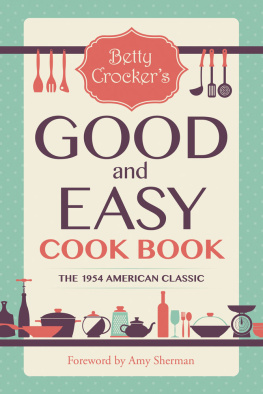THE BEST RECIPES FOR PALEO APPETIZERS, SNACKS & PARTY FOOD
Hundreds of Delicious Recipes for
Weight Loss and Super Health
DANA CARPENDER

CONTENTS

INTRODUCTION
Why This Book?
Its no secret that Ive been a low carber for the better part of two decades now. My story and my recipes are out there for all the world to see (and thank you very much to all of you who have taken a look). So why a paleo book?
Its been clear to me for a while that, despite occasional turf wars, the low-carb movement and the paleo movement are kissin cousins. Both focus on animal foods. Both avoid grains, potatoes, and sugar. Both make liberal use of vegetables.
The difference has been that low carbers, especially newbie low carbers, often use crutch or bridge foodslow-carb breads and tortillas, bake mixes, pastas, protein bars, and the like. These products are generally highly processed and often sources of gluten, soy, or both. While I felt, and continue to feel, that some of these products have a place in helping to wean people from their old, carb-laden diets, I know them to be a double-edged sword. I suspect that many cases of low-carb failure have occurred because people have relied on these products as staples, instead of basing their diets on those foods that are naturally low in carbohydrate.
(I will insert, parenthetically, that Dr. William Davis, in his excellent book Wheat Belly, asserts that there are proteins in gluten that are opioids, and physically addictive. The difference between these opioids and the ones we consider drugs is that instead of getting you high, wheat opioids make you hungry. This makes low-carb bread, tortillas, and pastas dangerous double-edged swords indeed.)
But my email, my blog responses, and my Facebook encounters with low carbers around the world tell me that there is a shift occurring. I hear from more and more people who are shunning soy products, who avoid gluten, who are seeking out grass-fed meat and dairy and wild-caught fish. More and more, I hear from people who have quit using artificial sweeteners. (The Sweetener Wars are the bane of my existence, quite honestly. No matter what sweetener I use in a recipe, someone will complain.) Huge numbers of people have dropped processed protein bars, soy-based cereals, diet soda, and are eating clean.
In other words, low carbers are trending toward paleo.
Many of the recipes in my previous books are paleo-friendly, but many are not. Indeed, my own eating habits have shifted over the years, to the point where there are recipes in my own books that I would no longer be willing to eat. Ive gone gluten free, no longer eating even low-carb bread or tortillas, yet quite a few of my old recipes call for these items, or ingredients such as vital wheat gluten, wheat germ, and wheat bran. Some use canola oil, which I havent touched in years. Others use commercial mayonnaise, but I now make my own, because the jarred stuff is replete with soy oil and other such nastiness.
Not so with this book. Here you will find no gluten, no grains of any kind, no soy, no omega-6-heavy processed oils, no processed specialty products. You will find animal protein and animal fats in many guises, bushels of vegetables, and quite a lot of fruit. Nuts and seeds, too. And, of course, herbs and spices galore. Have fun exploring!
What Is Paleo?
There was a learning curve to this book, and quite a lot of the problem was that there is no clear definition of paleo. With low-carb recipes, there is one simple metric: How many grams of carbohydrate per serving? But there is considerable disagreement as to which foods are paleo and which are not. I had to make a few decisions regarding what I thought constituted the modern paleolithic menu.
It bears pointing out that unless you eat only locally hunted and gathered wild foods, youre not really eating the same as Ogg. (Or Grok, with a tip of the hat to blogger and author Mark Sisson, of The Primal Blueprint. His prototypical caveman is named Grok, and his excellent blog, Marks Daily Apple, has the cheer Grok on!) Given that most of us are going to eat cultivated foods, and may very well eat foods that are not local to our area (she said, a cup of tea at handnot many tea bushes in southern Indiana), it behooves us to define our terms.
The first paleo nutrition book I readpossibly the first writtenwas Neanderthin, first self-published by Ray Audette in 1995, coincidentally the year I went low carb. Audette had suffered from rheumatoid arthritis and diabetes but found that with his paleo diet all symptoms vanished. His rule was simple and straightforward: If you cant gather a food with a sharp stick and a rock, and eat it raw, its not really food. Audette said that the big shift in the human diet came when people started using a new technologycookingto render otherwise toxic foods fit to eat. Or at least, make them nontoxic enough that people didnt immediately get ill. To Audette, that was the real linecan you eat it raw?
Note that Audette didnt say that you must eat all your food raw, but rather that you shouldnt eat things that are toxic when eaten raw. Most of us cook our meat, but steak tartare, carpaccio, and sashimi have been enjoyed for centuries. Despite recent hysteria regarding eggs, as recently as my childhood, eggnog made with raw eggs was considered a healing, strengthening food for invalids and children. (Be honest: Did you ever refuse to lick the cookie dough off the beater because it had raw egg in it? Didnt think so.)
On the other hand, if you eat any quantity of uncooked grain, raw legumes, or potatoes youll get a good bellyache. It was only the discovery of cooking that put these into the category of food, starting the Agricultural Revolution. That revolution, in turn, gave us civilization, but it did so at the cost of degrading our health in numerous ways and shortening our life spans. (It also was the beginning of environmental degradation, but thats a discussion for another book.)
Can you eat it raw? has been a guiding principle while exploring this way of eating.
While the shift from hunting and gathering to agriculture, and hence from a diet of meat and vegetables to one of grains and beans, can be seen as the first, and perhaps greatest, nutritional sin, there are a couple of other, far more recent dietary shifts that have had a drastic, deleterious effect on health.
It was about 300 years ago that European colonization of tropical islands, and slavery, made mass, commercial sugar production practical, and sugar cheap enough for the masses. It was disastrous for the slaves, for ecosystems, and for human health, all three.
Defenders of sugar like to point out that its natural, and that our bodies can use glucose for fuel. This is true. But the first rule of toxicology is dose is everything. Ask yourself what would happen if you increased your water intake 3,700 percent? (Dont try it. You can die from hyperhydrosis, becauselike sugarit is possible to get too much water.)
3,700 percent: Thats roughly how much our sugar consumption has increased over the past 300 years, from 4 pounds (1.8 kg) per person per year in 1,700, to over 150 pounds (68 kg) per year, or a little under a half a pound (227 g) a day. (And someones eating more, folks, because Im eating less.)
Even more jaw-dropping, Ive seen estimates that paleolithic man ate roughly 20 teaspoons (117 g) of sugar per year, one assumes in the form of honey, since there was no refined sugar. If this is so, the average American is eating more sugar in a day than our hunter-gatherer ancestors ate in a year, and consumes more sugar in six weeks or so than Ogg ate in a lifetime.


